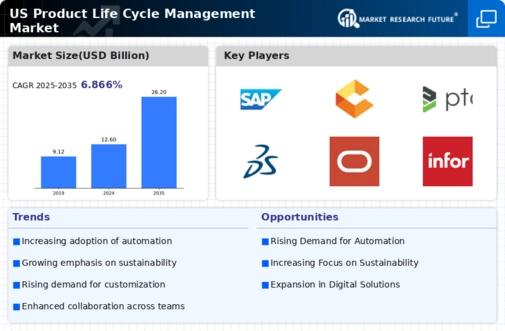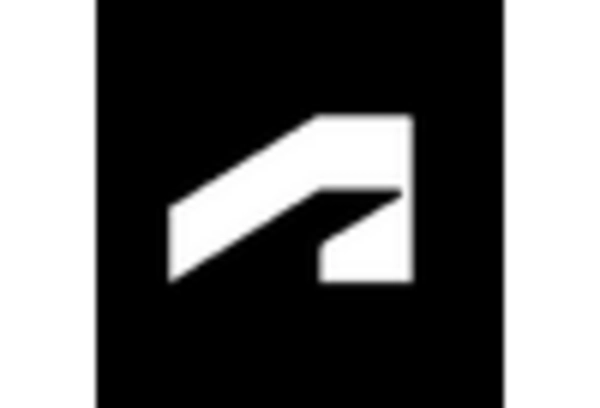Emphasis on Enhanced Customer Experience
The product life-cycle-management market is increasingly shaped by the emphasis on enhanced customer experience. Organizations are recognizing that understanding customer needs and preferences throughout the product life cycle is crucial for success. By 2025, it is expected that companies focusing on customer-centric product development will see a 20% increase in customer satisfaction ratings. This trend is driving the adoption of product life-cycle management solutions that facilitate better customer engagement and feedback integration. As businesses strive to create products that resonate with consumers, the product life-cycle-management market is likely to grow, reflecting the importance of customer experience in product strategy.
Growing Focus on Data-Driven Decision Making
In the current landscape, the product life-cycle-management market is witnessing a significant shift towards data-driven decision making. Organizations are increasingly leveraging analytics and big data to inform their product strategies, enhancing their ability to predict market trends and consumer preferences. This trend is expected to drive the market as companies seek to integrate data analytics into their product life-cycle management processes. By 2025, it is projected that businesses utilizing data-driven insights could improve their product success rates by as much as 25%. This reliance on data not only enhances product quality but also aligns offerings more closely with consumer demands.
Increased Regulatory Compliance Requirements
The product life-cycle-management market is being influenced by the rising complexity of regulatory compliance requirements across various industries. As companies strive to meet stringent regulations, the need for robust product life-cycle management solutions becomes paramount. In 2025, it is anticipated that organizations will allocate approximately 15% of their product development budgets to ensure compliance with evolving regulations. This trend underscores the importance of integrating compliance management into product life-cycle strategies, thereby driving growth in the product life-cycle-management market. Companies that effectively navigate these regulatory landscapes are likely to gain a competitive edge.
Expansion of E-Commerce and Digital Platforms
The product life-cycle-management market is benefiting from the rapid expansion of e-commerce and digital platforms. As online shopping continues to grow, businesses are compelled to adapt their product strategies to meet the demands of digital consumers. This shift is driving the need for comprehensive product life-cycle management solutions that can support online product launches and marketing efforts. By 2025, it is projected that e-commerce sales will account for over 20% of total retail sales in the US, further emphasizing the importance of effective product life-cycle management in this digital age. Companies that leverage these platforms effectively are likely to enhance their market presence.
Rising Demand for Efficient Product Development
The product life-cycle-management market is experiencing a notable surge in demand for efficient product development processes. Companies are increasingly recognizing the need to streamline their operations to reduce time-to-market and enhance competitiveness. In 2025, it is estimated that organizations utilizing advanced product life-cycle management solutions could reduce their product development time by up to 30%. This efficiency not only accelerates innovation but also allows businesses to respond swiftly to market changes. As a result, the product life-cycle-management market is likely to expand, driven by the necessity for organizations to optimize their product development strategies and improve overall operational efficiency.

















Leave a Comment